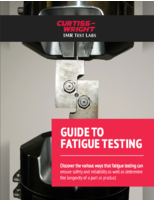Federal Laboratory Consortium highlights 3 NREL research projects.
Share:
Press Release Summary:
Federal Laboratory Consortium recognized NREL and its partners with 3 awards for excellence in technology transfer. NREL scientists teamed with Innovalight, Inc. to adapt Silicon Ink, a liquid form of silicon, and develop its use in solar cells. NREL's electrochromic window technology reflects sunlight, reducing heat gain and keeping buildings cooler, while NREL's black silicon nanocatalytic wet-chemical etch technique creates solar cells based on anti-reflection approach.
Original Press Release:
Federal Laboratory Consortium Highlights Three NREL Research Projects
McDonough Lauded as Outstanding Laboratory Representative
The Federal Laboratory Consortium for Technology Transfer's (FLC) Mid-Continent Region recently recognized the U.S. Department of Energy's National Renewable Energy Laboratory (NREL) and its partners with three awards for excellence in technology transfer. It also named NREL Commercialization and Technology Transfer Agreement's Specialist Carrieann McDonough as an Outstanding Laboratory Representative.
"NREL's strong showing at this year's awards is a testament to our efforts to take advanced research and find its application in the commercial marketplace," NREL Senior Vice President for Commercialization & Deployment Casey Porto said.
Excellence in Technology Transfer - Silicon Ink and Electrochromic Windows
NREL and Innovalight: Silicon Ink Boosts Quality and Cost Savings.
NREL's Photovoltaic (PV) Technology Incubator, created by DOE's Solar Energy Technologies Program, focuses on developing prototype PV components and systems and reducing market barriers for 2012 commercialization. Under the incubator program, NREL scientists teamed with Innovalight, Inc., to adapt Silicon Ink, a liquid form of silicon, and develop its use in solar cells.
This marks the first time that silicon has been sold as a liquid. The new product can boost the bottom line of a typical solar production plant by 20 percent, which for an average-size factory is $100 million. It also can boost the efficiency of the cells by 6 percent. Five of the world's leading solar cell producers have signed licenses to use Silicon Ink in their production lines.
Innovalight Silicon Ink was recently named among this year's most significant innovations by R&D Magazine with the prestigious 2011 R&D 100 Award.
NREL and US e-Chromic Accelerate Licensing Agreement for Electrochromic Window Technology
NREL's electrochromic window technology stands apart from other window options by reflecting sunlight, reducing heat gain and ultimately keeping buildings cooler.
The technology inspired entrepreneur Loren Burnett to form a new company called US e-Chromic, LLC, in Boulder, Colo., to further advance the technology. As licensing discussions progressed with Burnett, an opportunity arose that the new project fit perfectly -- DOE's America's Next Top Energy Innovator program.
The America's Next Top Energy Innovator program allowed NREL to give Burnett a reduced price on an option agreement for the electrochromic technologies and helped reduce paperwork. Within a month, the deal was closed. It was the first in the country under the new DOE program. This innovative technology transfer drew attention from the White House, and Vice President Joe Biden announced the finalized e-Chromic agreement during a May visit at NREL.
Notable Technology Development - NREL's Black Silicon
NREL's "black silicon" nanocatalytic wet-chemical etch technique is a one-step process creating high-efficiency solar cells based on an innovative anti-reflection approach that significantly reduces manufacturing costs, helping propel photovoltaics toward cost-competitiveness.
PV manufacturers purchased more than $4 billion in equipment in 2008. NREL estimates that its method can reduce processing costs by 4 to 8 percent, resulting in overall savings in solar cell manufacturing of 1 to 3 percent, making black silicon particularly appealing.
This technology was selected into NREL's Privately Funded Technology Transfer program, and was successfully transferred through a license agreement in just six months.
The "Black Silicon" Nanocatalytic Wet-Chemical Etch was honored with a 2010 R&D 100 Award.
Outstanding Laboratory Representative
Carrieann McDonough was selected as the Mid-Continent Region 2011 Outstanding Lab Representative. Carrieann has worked in NREL's Commercialization and Technology Transfer Office for almost 14 years and has been active in the Federal Laboratory Consortium since becoming NREL's FLC Laboratory Representative in 2008. She is currently serving her second term as a member at large and serves on a number of FLC national and regional committees as well as the Technology Transfer Working Group.
The FLC Mid-Continent Region presented its awards in late August at the regional meeting in Monterey, Calif. FLC was founded in 1974 and is a nationwide network of federal laboratories. It provides a forum to develop strategies as well as opportunities for linking laboratory mission technologies and expertise with the marketplace; more than 250 federal laboratories and their parent departments and agencies are FLC members.
NREL is the U.S. Department of Energy's primary national laboratory for renewable energy and energy efficiency research and development. NREL is operated for DOE by The Alliance for Sustainable Energy, LLC.
Visit NREL online at www.nrel.gov




